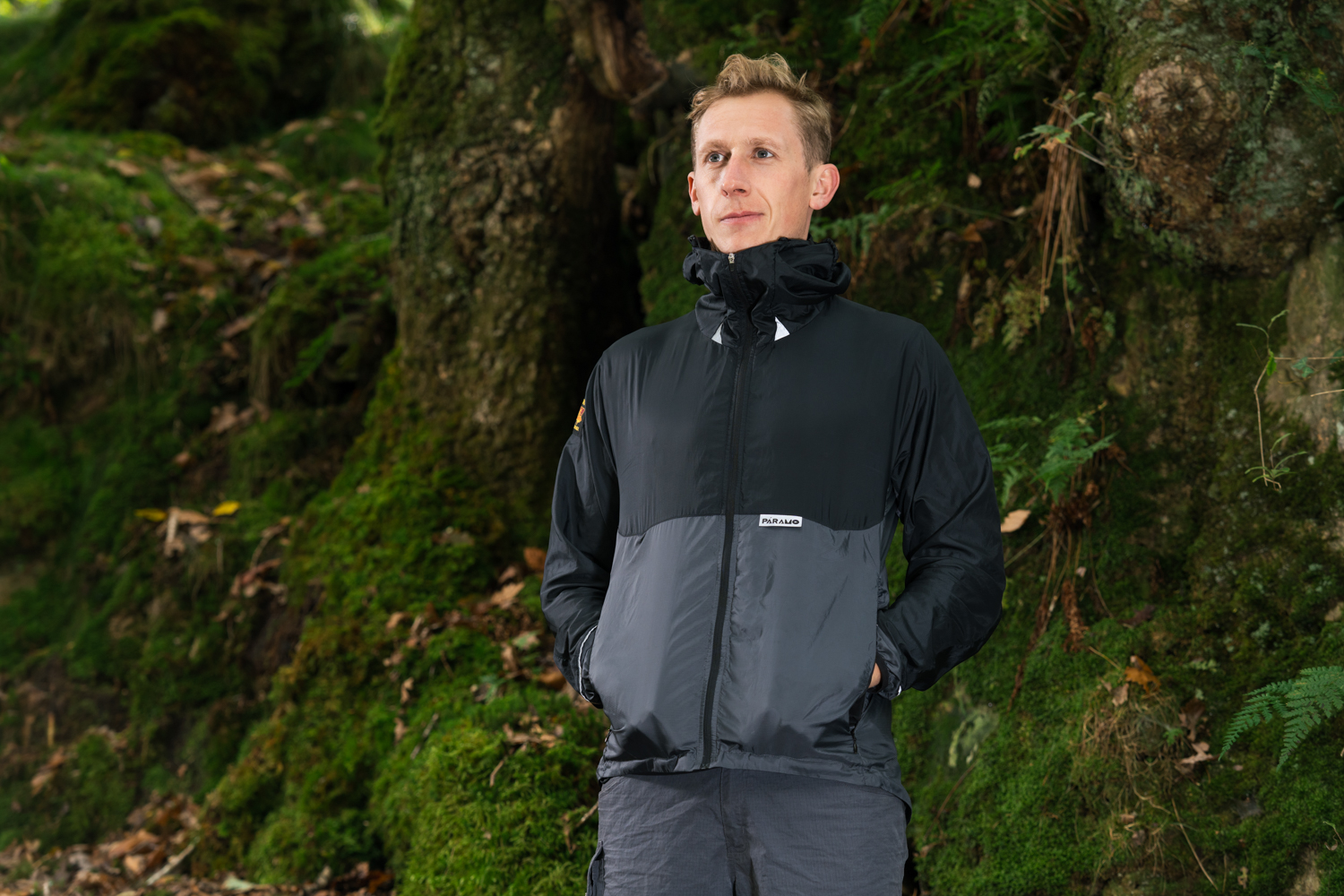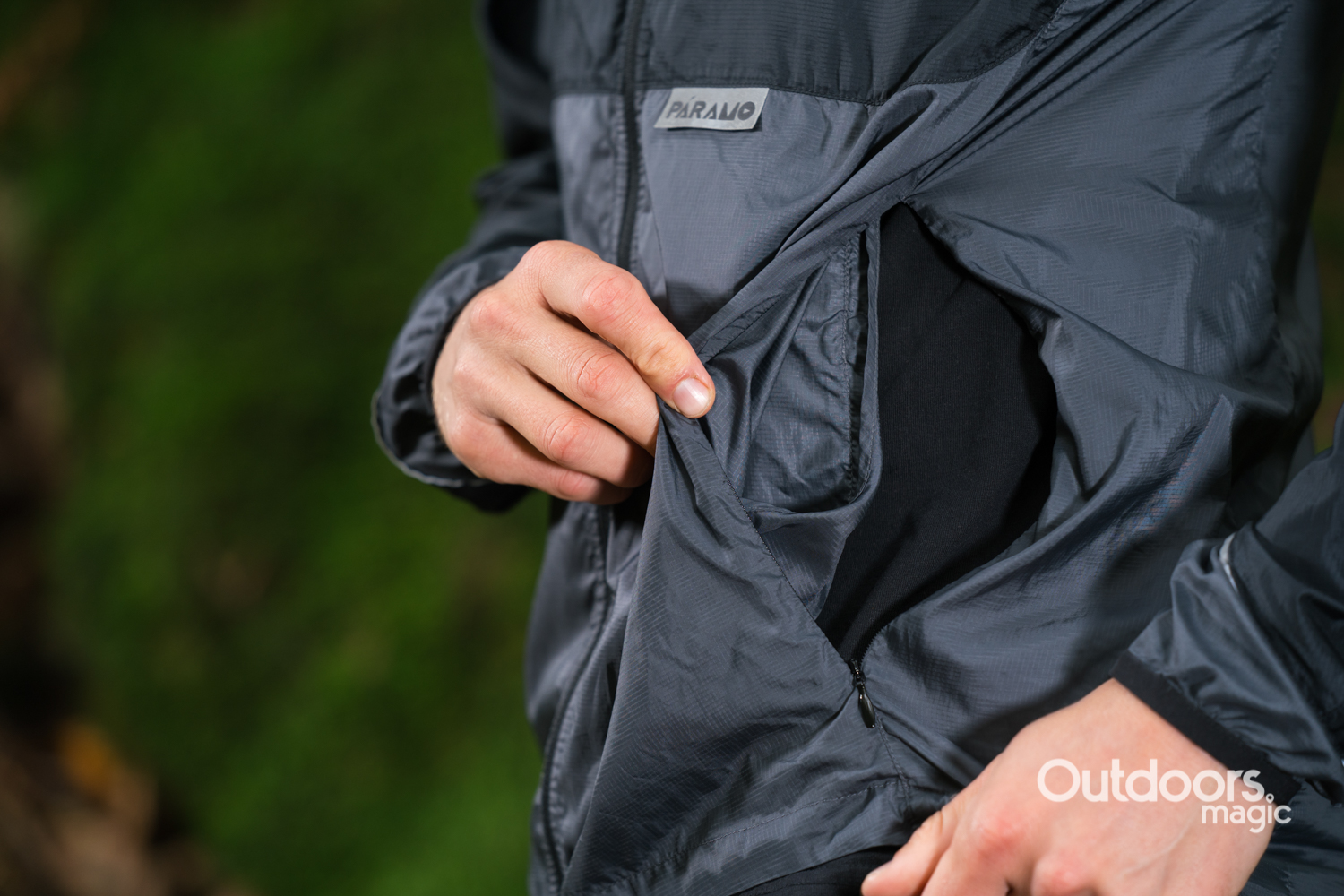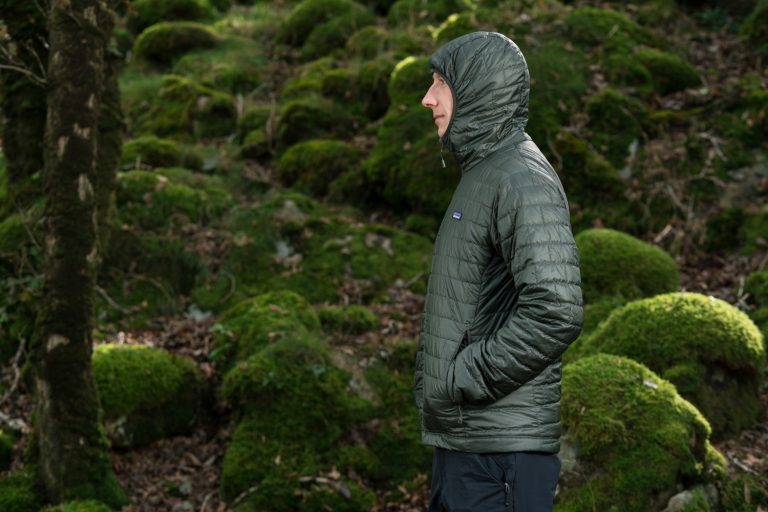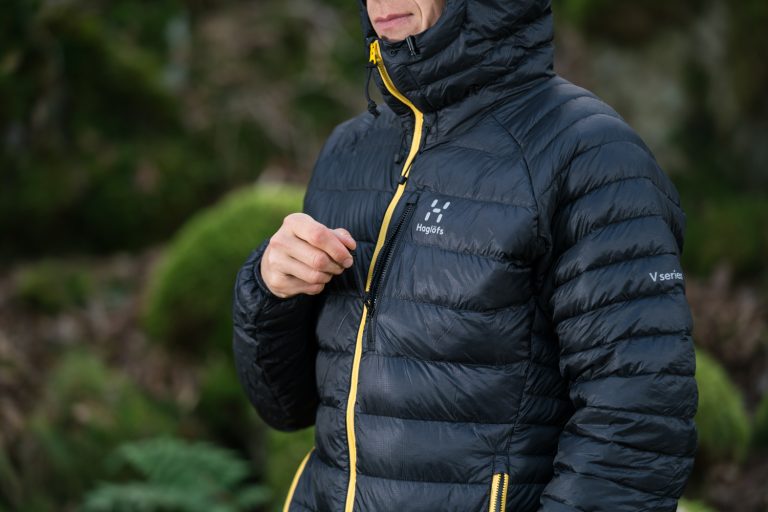Why We Chose It: Lightweight, versatile and eco-friendly
Price: €120
Weight: 116g
The Páramo Ostro Windproof is a lightweight windproof and breathable layer for high tempo adventures. It’s one of those jackets that you’ll end up taking on just about every single excursion outdoors, whether that’s a trek into the backcountry or a quick cycle to pick up some milk. At a glance it might look like just a simple windbreaker, but after using this for about 6 months now, I’d say there’s much more than meets the eye.
What’s The Páramo Ostro Best Suited To?
Trail running, hiking, climbing, road cycling, mountain biking. This thing’s just made for everything and not even in a jack of all trades master of one kind of way. I’ve worn this as a windbreaking layer while cycling to work, I’ve taken it backpacking through the Brecon Beacons, I’ve run my local trails in it and it’s also been a great layer to whip out during evening’s out in a pub beer garden. It’s been perfect for all manner of situations.
The Features
Superlight jackets tend to have very basic hoods but I wouldn’t say that’s the case here with the one on the Ostro. It’s helmet-friendly and has a useful adjustment toggle at the back for when you really want to cinch it in. There’s also a peak on the front.

There are two ventilation zips on the lower torso that double as handwarmer pockets. To rest your hands, you need to find the little fabric slits on the inside of the jacket. I wouldn’t totally advise stowing things like your phone or wallet in these as there’s a chance they could fall out.
The cuffs are elasticated but you do get a toggled drawcord at the hem if you want to lock in heat. Other details include little reflective details (handy for those night runs or cycles) and the long one-way main zip which has a beard guard at the top and a mini internal storm flap.
Why We Chose The Páramo Ostro Windproof For Our Green Gear Guide
We chose it mainly because it offers lightweight water repellent protection without the nasty PFCs that many windproof jackets will come with. PFCs are environmentally hazardous substances which are massively persistent in the environment. Studies have even shown that some PFCs can accumulate in living organisms such as the livers of polar bears in the Arctic and in human blood.












